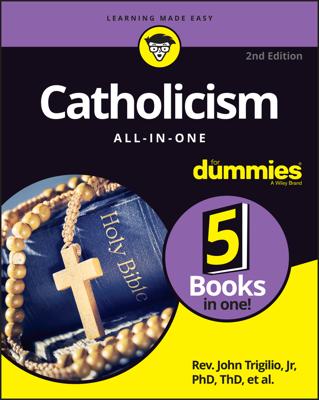Eastern Orthodox Catholics and Roman Catholics are the result of what is known as the East-West Schism (or Great Schism) of 1054, when medieval Christianity split into two branches.
The Byzantine split with Roman Catholicism came about when Pope Leo III crowned Charlemagne, King of the Franks, as Holy Roman Emperor in 800. From the Byzantine viewpoint, this was a slap to the Eastern Emperor and the Byzantine Empire itself — an empire that had withstood barbarian invasions and upheld the faith for centuries. After Rome fell in 476, Byzantium was the only vestige of the Holy Roman Empire.Charlemagne’s crowning made the Byzantine Emperor redundant, and relations between the East and the West deteriorated until a formal split occurred in 1054. The Eastern Church became the Greek Orthodox Church by severing all ties with Rome and the Roman Catholic Church — from the pope to the Holy Roman Emperor on down.
Over the centuries, the Eastern Church and Western Church became more distant and isolated for the following reasons:
-
Geography: The West encompassed Western Europe and the northern and western areas of the Mediterranean and the East took up Asia Minor, the Middle East, and Northern Africa.
-
Ignorance: The Byzantine Church knew less and less Latin and even less Latin tradition, and vice versa. So most patriarchs in Constantinople couldn’t read any Latin, and most popes in Rome couldn’t read any Greek. Byzantines in the East used leavened bread in their Divine Liturgy to symbolize the Risen Christ, and Latins in the West used unleavened bread as was used by Jesus at the Last Supper.
-
Different theologies: Both were valid, but each had its own perspective. The West (Latin) was more practical and, although with belief in the divinity of Christ, put emphasis on his humanity when depicting Jesus in art — especially by making realistic crucifixes. The East (Byzantine) was more theoretical and, although fully believing in the humanity of Christ, focused on his divinity, which was much more mysterious.
-
Personalities and politics: Michael Cerularius, Patriarch of Constantinople, and Pope St. Leo IX weren’t friends, and each one mistrusted the other. Cerularius crossed the line when he wrote in a letter that the Latin use of unleavened bread was Jewish but not Christian. He was denying the validity of the Holy Eucharist in the Western Church. Leo countered by saying that the patriarchs had always been puppets of the Byzantine emperors.
Eastern Orthodox branches include the Ruthenian, Ukrainian, Greek Catholic, Melkite, Romanian, and Italo-Albanian Byzantine Churches. In addition to the Byzantine, Eastern Catholics also include Maronite, Coptic or Chaldean Catholic Churches.
In any event, the schism that divided Christendom right down the middle exists to this day. Although both sides accept the validity of each one’s orders and sacraments, no inter-Communion exists between the Roman Catholic and the Eastern Orthodox. That means that normally speaking, Catholics aren’t allowed to receive Holy Communion in Orthodox Churches, and conversely, Orthodox shouldn’t receive Holy Communion in Catholic Churches.

